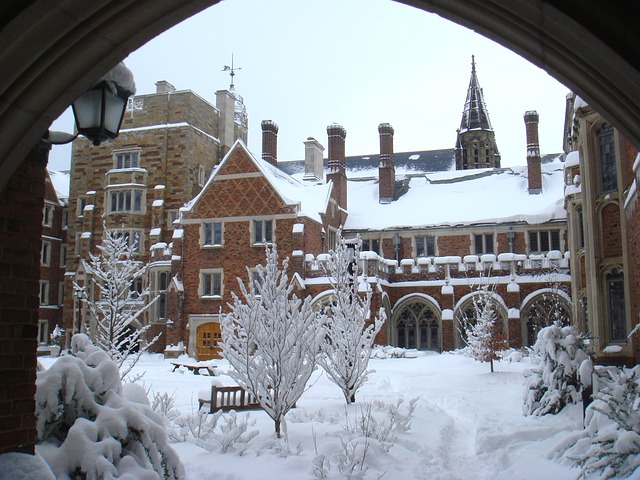The Southeast region of the United States is home to a rich variety of colleges and universities, from coastal campuses in Florida to historic institutions in the Carolinas. With so many options to choose from, selecting the right college can be an overwhelming process for prospective students. Whether you’re drawn to the region’s warm climate, cultural vibrancy, or top-tier academic programs, narrowing down your choices is crucial for making a decision that fits your personal, academic, and financial goals. This blog will guide you through the key factors to consider when choosing the right college to attend in the Southeast.
1. Academics and Major Availability
One of the most important factors to consider when choosing a college is whether it offers the academic programs that align with your interests and career goals. The Southeast boasts a wide variety of colleges and universities, each with its own strengths in certain fields of study.
Public Universities: Institutions like the University of North Carolina at Chapel Hill, University of Georgia, and the University of Florida are known for their strong academic offerings in areas like business, engineering, and health sciences. These schools often offer a large number of majors, minors, and interdisciplinary programs, which provide students with flexibility in their studies.
Private Colleges: Smaller, private institutions like Emory University in Georgia or Furman University in South Carolina may offer more personalized attention and specialized programs. These schools tend to have smaller student populations, which can foster closer relationships with professors and peers.
Be sure to research the specific departments and academic resources available at the colleges you’re considering. A school that excels in your desired field will set you up for success both during college and in your future career.

2. Campus Culture and Environment
The Southeast region is known for its warm climate, and this can significantly impact your campus experience. Before deciding, think about whether you’re drawn to a more urban or rural setting.
Urban Campuses: Universities like the University of Miami or Georgia State University are located in bustling metropolitan areas, offering access to internships, diverse cultural experiences, and professional networks. The city environment might be ideal for students who want to experience city life and seek connections in industries like media, entertainment, or business.
Rural or Suburban Campuses: On the other hand, schools like Clemson University or the University of Alabama offer a more traditional college town experience. These campuses tend to have tight-knit communities, a vibrant college sports culture, and an emphasis on school spirit.
Additionally, consider the campus culture. Are you looking for a university that fosters academic rigor or one that emphasizes Greek life and athletic success? Visit campuses, if possible, or attend virtual tours to get a sense of the atmosphere and whether it aligns with your personality.
3. Location and Climate
The Southeast offers a variety of climates, from the sweltering heat and humidity of Florida to the more temperate climates of the Carolinas and Tennessee. It’s important to consider how the region’s weather will affect your lifestyle, especially if you’re used to colder temperatures or prefer milder seasons.
Coastal Locations: Universities in coastal cities, like the University of Miami or the College of Charleston, offer the advantage of beautiful beaches and access to water sports. However, the humidity and potential for hurricanes may be a downside for some students.
Mountain and Forested Locations: If you’re drawn to nature and enjoy cooler weather, consider schools like the University of Tennessee in Knoxville or Appalachian State University in Boone, North Carolina. These areas offer hiking, skiing, and other outdoor activities.
When assessing climate, think about how it will influence your daily life, study habits, and social activities.
4. Financial Considerations
Cost is a critical factor when selecting a college. In the Southeast, public universities generally offer lower tuition rates for in-state residents, making them more affordable for students who live in the region. For out-of-state students, however, tuition rates at public universities can be significantly higher.
Public Universities: Schools like the University of Florida, University of North Carolina, and the University of Alabama offer competitive tuition rates, especially for in-state residents. Many of these universities also offer merit-based scholarships and need-based financial aid to help reduce costs.
Private Colleges: Although private colleges tend to have higher tuition, many, like Emory University and Davidson College, provide substantial financial aid packages that can make them more affordable. Be sure to investigate the availability of financial aid and scholarships at each institution you’re considering.
Additionally, think about the long-term return on investment (ROI). A college education is a significant financial commitment, and you’ll want to choose a school that offers not only the education but also the career resources, networking opportunities, and internship programs to help you succeed after graduation.

5. Campus Resources and Extracurricular Activities
College is about more than just academics—it’s also about building connections and developing your skills outside of the classroom. Each school offers a unique set of extracurricular activities that can help you grow as a person and as a professional.
Clubs and Organizations: From student government to cultural clubs, sports teams, and volunteer opportunities, it’s important to find a college that offers clubs and organizations that align with your interests. In the Southeast, you’ll also find a strong emphasis on sports, particularly college football and basketball, which often form a central part of campus life.
Internships and Career Services: Look for colleges with strong ties to industries and businesses in the region. Schools like Duke University and the University of Miami offer excellent career services and internship opportunities for students pursuing careers in healthcare, technology, business, and more.
Campus Facilities: Consider the quality of campus facilities such as libraries, research labs, gyms, and student centers. The availability of state-of-the-art resources can enhance your learning experience.
6. Diversity and Inclusivity
The Southeast is home to a rich cultural history, and colleges in the region can offer diverse and inclusive environments. Look for institutions that prioritize diversity in their student body and faculty. Schools like the University of South Carolina and Florida State University are known for fostering inclusive communities, with various cultural clubs, resources for underrepresented groups, and ongoing diversity initiatives.
Conclusion
Choosing the right college is a personal decision that requires careful consideration of various factors. In the Southeast, the combination of warm weather, vibrant campus life, and diverse academic options makes it an attractive region for many students. By focusing on your academic interests, preferred campus environment, financial considerations, and extracurricular goals, you can find a college that aligns with your aspirations. Take the time to visit campuses, connect with students, and weigh all your options carefully. The right college will not only help you succeed academically but will also provide the foundation for a fulfilling college experience.
